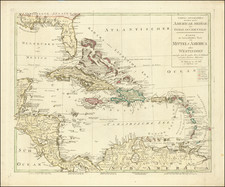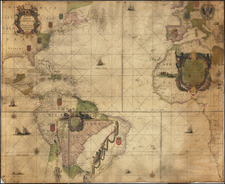Scarce map of the Siege of Guadalupe and Marie Galante, showing both coastal and topographical details, from Heiden's Americanische urquelle derer innerlichen kriege des bedrängten Teutschlands. . .
To divert French troops from Germany, William Pitt decided the British should attack France wherever they could. British troops were sent on diversionary attacks on the French coast, at St. Malo and Cherbourg. An expedition to western Africa captured the French slaving station at Senegal. In North America, a force was dispatched to take Louisbourg and Quebec. In India Robert Clive won the Battle of Plassey.
For 1759, Pitt directed attention to the West Indies, specifically Martinique and Guadeloupe. Major-General Peregrine Hopson, who had been Governor at Nova Scotia before the outbreak of war, was appointed to the chief command, and Colonel John Barrington, a junior officer, was selected to be his second. On November 12, 1758, the transports, escorted by 8 ships of the line under Commodore Hughes, got under way and sailed with a fair wind to the west. On January 3 ,1759, the British expedition reached Barbados where Commodore John Moore was waiting with two more ships of the line to join it and to take command of the fleet. The total expeditionary force numbered some 6,800 men.
The primary target of the attack was Martinique. Hopson landed his troops near Fort Royal and fought a battle against the French, leaving 100 British dead or wounded. The terrain ahead was judged so difficult that it was decided to re-embark the troops immediately. A second landing was considered at Saint-Pierre but the defenses were so formidable that Hopson decided to abandon the attack on Martinique and to proceed to Guadeloupe.
The fleet sailed to Basse-Terre and on January 22, 1759, opened fire on the town, reducing it to a heap of blackened ruins. At dawn on January 24 , the British troops were landed and moved inland, until they met a strong French position in a rugged, mountainous terrain. By that time the men on the sick list numbered 1,500, or fully a quarter of the force. Hopson's health was failing rapidly too and he remained inactive. Even the representations of Barrington could not stimulate him to further action. On February 27, Hopson died, leaving the command to devolve to Barrington. The British expeditionary force was by now on the brink of destruction. More than 600 invalids had been sent to Antigua, and another 1,600 men were on the sick list. The remainder were succumbing so fast that sufficient men could hardly be found to do the daily duty.
Meanwhile, John Moore, being fortunately independent of Hopson in respect of naval operations, had sent ships round to Fort Louis. They speedily battered the fort into surrender and installed a garrison of 300 Highlanders and Marines. Barrington quickly put an end to the fatal period of inaction. He attacked from 3 sides and forced the French governor Nadau du Treil to capitulate on May 1,1759.









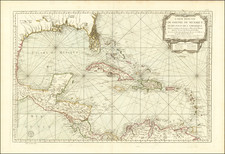
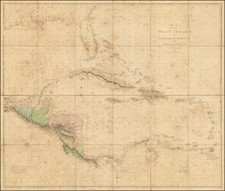
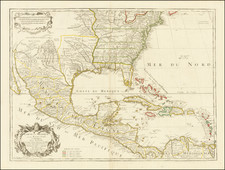
![The Island of Cuba [with] Hayti or Santo Domingo and Porto Rico [with] The Leeward or North Caribee Islands](https://storage.googleapis.com/raremaps/img/small/78673.jpg)
